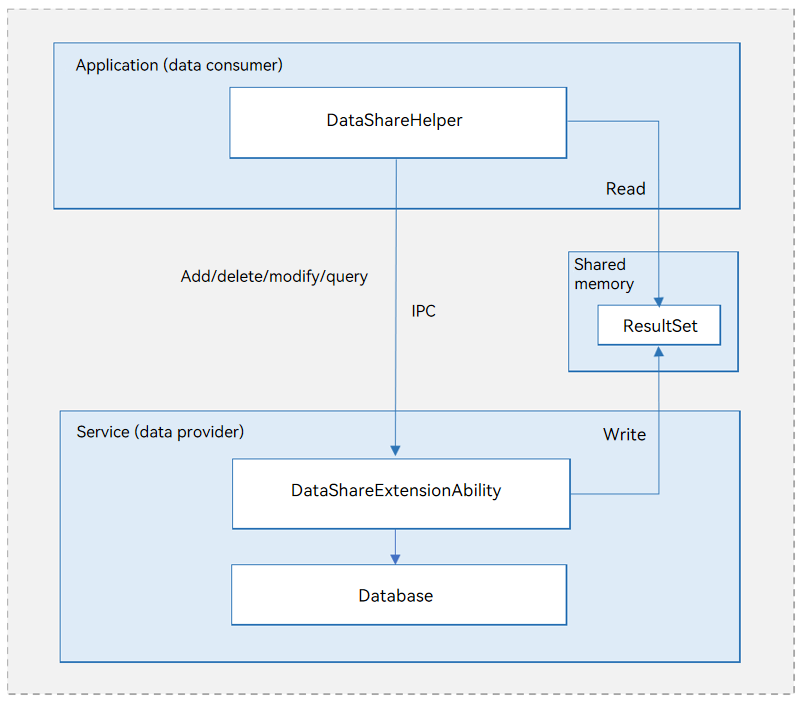harmony 鸿蒙DataShare Overview
DataShare Overview
Introduction
The DataShare module allows an application to manage its own data and share data with other applications. Currently, data can be shared only between applications on the same device.
DataShare must be used together with DataShareExtensionAbility.
Data needs to be shared in a wealth of scenarios. For example, contacts, short message service (SMS), and media gallery always needs to be shared. However, certain data, such as accounts and passwords, cannot be shared. Some data, such as SMS messages, can be queried but not modified by other applications. DataShare provides a secure data sharing mechanism for applications in a variety of scenarios.
The data provider can directly use the DataShare framework to share data with other applications without complex encapsulation. The data consumer only needs to learn and use a set of interfaces because the data access mode does not vary with the data provisioning mode. This greatly reduces the learning time and development difficulty.
Basic Concepts
Before you get started, familiarize yourself with the following concepts:
- Data provider
The DataShareExtensionAbility based on the stage model implements functions, such as selectively adding, deleting, modifying, and querying data, and opening files. It implements services related to cross-application data sharing.
- Data consumer
The data consumer uses DataShareHelper, a utility class created by createDataShareHelper(), to access the data provided by the data provider.
- ValuesBucket
One or more data records stored in the form of key-value (KV) pairs. The keys are of the string type. The values can be of the number, string, Boolean, or Unit8Array type.
- Result set
A collection of query results. Flexible data access modes are provided for users to obtain data.
- Predicate
Conditions specified for updating, deleting, or querying data in the database.
Working Principles
Figure 1 DataShare mechanism

The DataShareExtAbility module, as the data provider, implements services related to data sharing between applications.
The DataShareHelper module, as the data consumer, provides interfaces for accessing data, including adding, deleting, modifying, and querying data.
The data consumer communicates with the data provider using inter-process communication (IPC). The data provider can be implemented through a database or other data storage.
The ResultSet module is implemented through shared memory. Shared memory stores the result sets, and interfaces are provided to traverse result sets.
Constraints
DataShare is subject to the limitations on the database used by the data provider. For example, the supported data models, length of the keys and values, and maximum number of databases that can be accessed at a time by each application vary with the database in use.
The payloads of ValuesBucket, predicates, and result sets are restricted by IPC.
你可能感兴趣的鸿蒙文章
harmony 鸿蒙DataShare Development
harmony 鸿蒙Distributed Data Object Development
harmony 鸿蒙Distributed Data Object Overview
harmony 鸿蒙Distributed Data Service Development
harmony 鸿蒙Distributed Data Service Overview
harmony 鸿蒙Preferences Development
- 所属分类: 后端技术
- 本文标签: